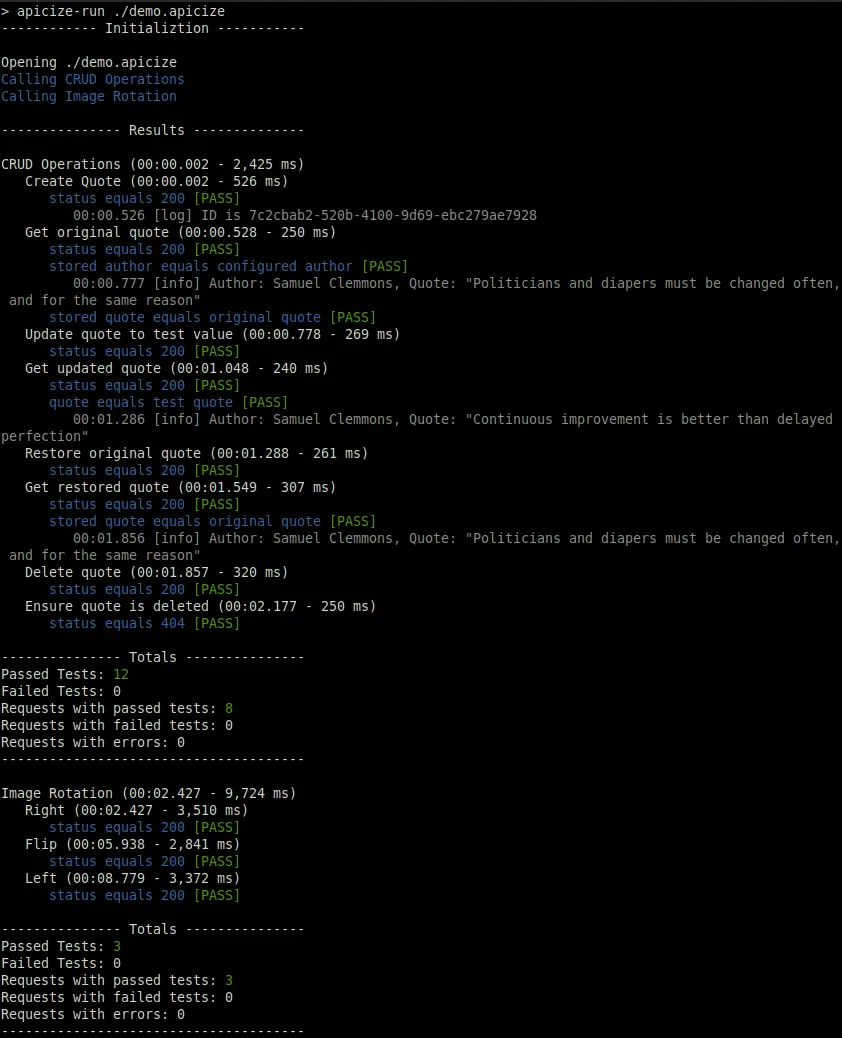Using the Apicize CLI Runner
You can execute Apicize tests in a terminal using the Apicize CLI Runner. To use it, run apicize-run (workbook name). You can specify a full or relative path name for the workbook. If you just pass in the name of the workbook, Apicize will attempt locate it in the current user's documents Apicize directory.
By default, information about the run is displayed in a formatted format when using it interactively. However, the runner includes options to make it usable from an unattended CI/CD pipeline as well.
Exit Codes
After execution, the runner will set the exit code as follows:- Zero (0): All requests succeed and all tests passed
- Positive (< 0): Apicize was unable to make one or more requests or execute one or more tests
- Negative (< 0): General failure
Output Execution Data
You can use the --output parameter to specify a file name to write detailed test data in JSON format. You can store the test data file as an artifact for your pipeline's output.
Alternatively, you can set the output file name to -- to output the detailed test data to STDOUT, and the human-readable format, along with any errors, will be output to STDERR.
Globals
You can store credentials like authorization and certificates in a JSON file and refer to it using the --globals parameter. The format is identical to that which is stored in the .apcize-priv or globals.json
Pipe Workbook In
If you want to pipe workbook data via STDIN as opposed to read a file, specify -- as the file to process.

